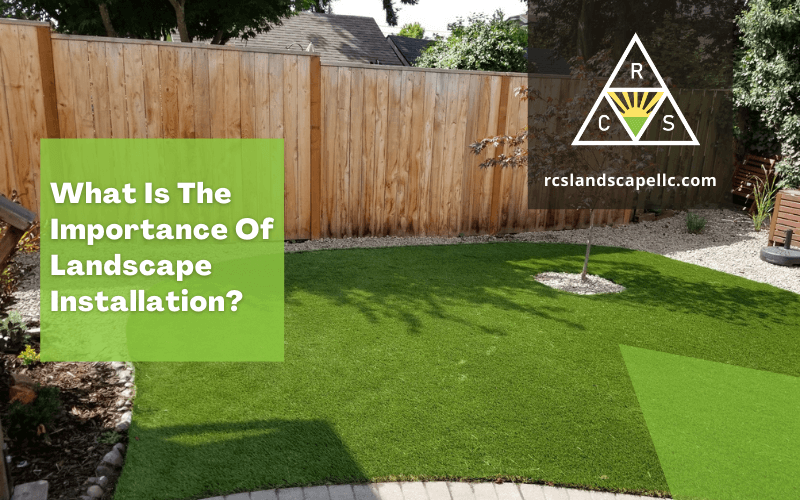The Greatest Guide To Landscape Design
7 Simple Techniques For Landscape Design
Table of ContentsThe Single Strategy To Use For Landscape DesignNot known Incorrect Statements About Landscape Design The Single Strategy To Use For Landscape DesignSome Known Factual Statements About Landscape Design The 9-Minute Rule for Landscape Design
A yard can typically be split into three locations: public (the front yard), private (the back yard), and solution (normally the side backyard). The location of task locations depends largely on the type of location, the dimension of space required, the type of activity, and the desired distance to other tasks and frameworks.The outdoors wall of your house frequently works as the initial wall or starting point of an outdoor room. Incompatible usages must be separated, and relevant tasks, such as cooking and dining, should be assembled to make the backyard more effective and enjoyable. When making use of hardscape to create rooms, utilize construction material comparable to that made use of in the residence for connection from your house into the yard.
Linked rooms. Credit Scores: Gail Hansen, UF/IFAS Making use of similar hardscape functions and repeating plants draws the eye around the garden.
Some Of Landscape Design

For emotional convenience plants are made use of as physical or implied obstacles for privacy and security. Physical barriers block both the view and accessibility to an area and include fences, walls and plant hedges. Implied barriers, typically low expanding plants, block accessibility but not the view (Number 9). Various other features of plants consist of cleansing the air, protecting against disintegration and dirt loss, preserving moisture in the soil, and returning raw material to the dirt.
Physical and indicated obstacles. Credit: Gail Hansen, UF/IFAS For these factors, the sorts of plants to be made use of (such as trees, bushes, or groundcovers) must be selected in the early stages of planning (Landscape Design). Plant types are picked for their functional capacities to make sure that their future function and required space can be taken into consideration at the very same time

The Ultimate Guide To Landscape Design
Each plant mass is in front of, behind, or following to, an additional mass. Number 11. Straight plant layers. Credit Scores: Gail Hansen, UF/IFAS Figure 12. Upright plant layers. Landscape Design. Credit: Gail Hansen, UF/IFAS Duplicating plants within a mass and duplicating masses with similar plants links the garden together. The specific plant qualities have to be thought about to successfully layer and mass plants.
All plant make-ups begin with the main framework plants, the large, mainly evergreen this background plants-such as the trees and large hedges. These plants separate or enframe rooms, control the dimension of the room, and supply the starting point for choosing the ideal attributes of the 2nd layer, midground plants, for massing and infill.
Essential factors in the garden need to be highlighted by the usage of unique plants, unique structures, or yard accessories. Noting limits or entries to rooms can be finished with entrances, arbors, and actions, or via making use of distinct and vibrant plants. The form and/or design motif of the yard will certainly frequently assist determine the essential factors and just how they should be highlighted.
Various other vital areas in the yard are prime focus, which is utilized to aesthetically organize a landscaped location. The kind of focal point typically relies on the seeing viewpoint. Various perspectives or point of views can expose different structures in the landscape that may need a selection of prime focus. Contrasting texture, form, size and shade will catch and hold the eye.
Some Known Details About Landscape Design

Figure 13. Plant types. Credit Report: Gail Hansen, UF/IFAS After form, structure is the following dominant attribute go to my site of a plant; coarse, medium and great appearances can be used for comparison and focus in the landscape. Form and structure both trump shade in the yard for a lot of the year. Throughout particular periods, shade will certainly be the most recognizable characteristic of the garden.
The pleasant aroma of plants, the audio of wind in the trees, the audio and structure of water, and the colors and appearances of sculptures, pots and yard furniture all include in the experience of the garden. One detail that is commonly ignored is the impact of light on the looks of the plants.

Some Known Questions About Landscape Design.
It is very important to recognize the eventual mature size of plants so they can be placed in the right location and spaced effectively when they are mounted. Giving plants space to expand is a challenge since the usual mature dimension is typically based upon optimal expanding problems and the environmental conditions of a website might cause a plant to grow bigger or remain smaller sized.